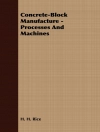This book demonstrates how to describe and analyze a system’s behavior and extract the desired prediction and control algorithms from this analysis. A typical prediction is based on observing similar situations in the past, knowing the outcomes of these past situations, and expecting that the future outcome of the current situation will be similar to these past observed outcomes. In mathematical terms, similarity corresponds to symmetry, and similarity of outcomes to invariance.
This book shows how symmetries can be used in all classes of algorithmic problems of sciences and engineering: from analysis to prediction to control. Applications cover chemistry, geosciences, intelligent control, neural networks, quantum physics, and thermal physics. Specifically, it is shown how the approach based on symmetry and similarity can be used in the analysis of real-life systems, in the algorithms of prediction, and in the algorithms of control.
Table des matières
Introduction: Symmetries and Similarities as a Methodology for Algorithmics of Analysis, Prediction, and Control in Science and Engineering.- Algorithmic Aspects of Real-Life Systems Analysis: Approach Based on Symmetry and Simila.- Algorithmic Aspects of Prediction: An Approach Based on Symmetry and Similarity.- Algorithmic Aspects of Control: Approach Based on Symmetry and Similarity.- Possible Ideas for Future Work.












